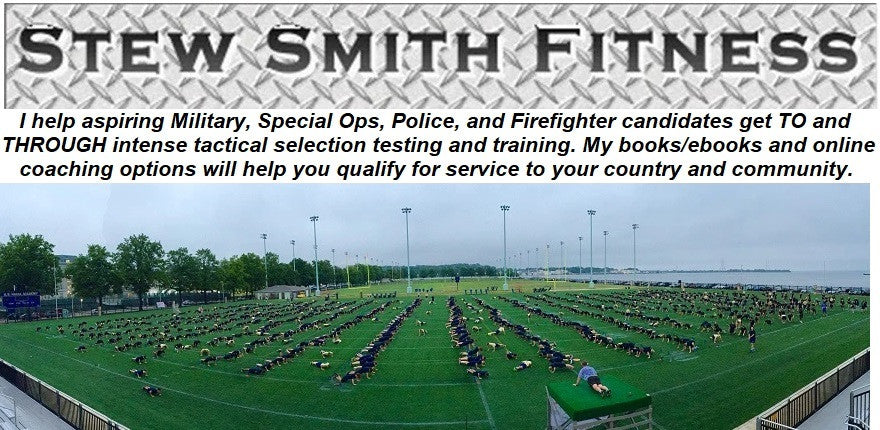Whether you are training to join the military, currently active duty, or just want to run faster for competitive events, there are more ways to getting better at running than “just running”. Sure, you should be running, but you will find that if you try the following suggestions, you can pick up the speed for timed runs and races in a short cycle of training.

Technique and Efficiency – No matter how you run, improving the style in which in run is critical to both improving speed and reducing injury. In fact, in the Evolution of Running article, there are many ways to run, but all tend to focus on how your foot impacts with the ground, how long / short your stride is, how quickly you move your feet (frequency), arm swing, and breathing. Find the method that works best for you or start with one of the above issues at a time and work on your stride. Most people will over stride (too long) and cause a hard heel strike – you should not do that. Some people prefer a smaller stride and land mid-foot to fore-foot. You should get your gait analyzed of have someone slow motion video capture you running on your phone and compare them to other runners. More running technique tips: Breathing / Arm Swing.
Lose Weight – IF you look at the fastest endurance runners, you will see they are very lean – too lean for the tactical athlete as you need to also have strength, power, muscle stamina, short distance speed and agility. Any extra fat you are carrying will slow you down – even in 5-10 lbs will help you with running faster for typical timed running events such at 1.5 mile, 2 mile, 3 mile, 4 mile, and 5 miles timed run events in basic and special ops PT tests of the military. Move More – Eat Less is a first way to start losing weight. Earn your food throughout the day with some activity before / after you eat each meal. The lost in weight will also make pushups and pullups easier as well.
Run Every Other Day – If you are not used to running everyday – which will help you tremendously with getting faster at running, replace the day in between runs with Non-Impact Cross Training options. Make these tough however and get winded while biking, elliptical, rowing, or swimming. Focus on timed events that is similar to the distance and time that you would run your goal distance. For instance, if you do a 1.5 mile run in 10 minutes, make your hard bike / other non-impact intervals for 10 minutes. But do a few of these to complete a 20-30 minute workout. Adding a non-impact day will help you reduce the impact stresses on your knees, shins, tendons that tend to get inflamed when running more than you are used to doing. See link in this paragraph for great ideas like the Bike Pyramid and Tabata Intervals to really get the heart rate higher and you in better cardiovascular shape without the pains of running.
Do These Favorite Running Workouts – Goal Pace Running – A goal pace workout goal is to be able to run a quarter mile at your goal mile pace. If you want a 9 minute 1.5 mile run, you need to run it in 1:30. If you want a 10:30 1/.5 mile run, you need to run the quarter mile in 1:45. Learn how to run each lap of the following workout at YOUR goal pace. You have to think GOAL PACE strategy for every lap of a timed run and train to maintain it. Here is the workout:
Warmup 5-10 minutes (bike, jog, light stretch, etc)
Repeat 6-8 times:
Run 1/4 mile at goal mile pace
Walk 100m or mix in calisthenics for 1 minute as an active rest. The best ideas are exercises that you will also be tested in (pushups, situps, pullups), but also you can do leg exercises if you did upper body the day before (squats, lunges, step ups, run bleachers for 1 minute in between ¼ mile sets.
Also try half mile intervals:
Repeat 3-4 times
Run ½ mile at goal mile pace
- Rest with 200m walk or calisthenics exercise of choice for 1 minute – add in a short stretch too.
Better Fuel – If you have worked on your conditioning by running or other non-impact options and focused on better technique, but improvements are not occurring fast enough for you after a few weeks, try adding better fuel. Food rich in complex carbs and natural sugars like fruits and vegetables, will help you build up the high octane energy you will likely need to pick up pace on timed run events. After the calisthenics section of a PT test, many people lack the energy to maintain their goal pace in a fitness test, make sure you have many of these foods in the Better Fuel Link for ideas Before, During, and After Workouts. Personally, I tend to eat a banana, a few apple slices before the event and sip juice or Gatorade during the test just so I do not run out of fuel about a mile into the 1.5 mile run. This is especially important if you are doing the Pre-BUD/S PST when you have to swim 500m first, then pushups, situps, (2 min each), and max pullups, then run the 1.5 mile run.
Related Running Article
Ask Stew – Lifter Trying to Run
Interval Training
Non-Impact Cross Training
